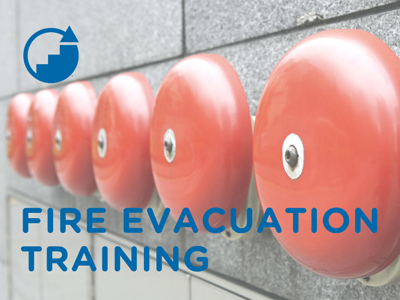 |
Preventing Violence at the Workplace - Retail |
0.50 |
This course addresses workplace violence, including its factors and types, and provides strategies for preventing it. |
 |
Managerial Leadership: Employing Motivational Strategies (Instructor Guide) |
0.50 |
You need to use motivational strategies in your leadership to help your employees perform optimally, and to make them feel as though they are helping meet a need. When you motivate your employees to accomplish their goals, and give them the necessary feedback to optimize their performance, they feel they are helping meet the organization’s needs.
You, your employees, and your organization all benefit when you use motivation in leadership. You benefit because, through motivation, your work group will perform optimally. Your employees benefit because they experience job satisfaction and success in accomplishing their goals. Your organization benefits because its members are more committed to helping it be successful and grow.
In this course you will learn to: motivate employees and overcome employee apathy.
This Instructor's Edition of this course includes notes and suggestions to assist you in presenting the material, whether in an in-person classroom setting or as an instructor-led online or distance-learning course. It also provides you with the answers to questions found in mid-lesson activities, as well as in the quiz that concludes the course. |
 |
Creating Community Collaborations |
2.00 |
Across the country, more and more communities are forming community collaborations to address the out-of-school needs of children and youth of all ages. When different segments of the community join together, share ideas, and pool their resources and efforts to create out-of-school time initiatives, children and youth benefit. What one organization or program may not be able to accomplish alone is often achievable when partnerships and collaborations among diverse groups and individuals are formed.
When school-age care professionals are knowledgeable about what it takes to create and sustain successful collaborations, they can play an important leadership role in creating out-of-school time initiatives and programs that will meet the needs of children and youth in their communities now and in the future. |
 |
Advanced Interpersonal Communication: Customers and Vendors (Instructor Guide) |
0.50 |
Your customers include anyone who uses your company or organization to obtain goods and services. Customers might be internal or external. An internal customer is a member of your organization and can be a supervisor, colleague, or subordinate. An external customer is someone from outside your organization. Each customer is of equal importance, regardless of the amount of business that customer provides to your organization. You should provide the same level of quality goods and services all your customers, and all are equally deserving of efficient and effective communication.
In this course you will learn: to respond to customers’ complaints, and to reject a vendor’s contract without rejecting the vendor, and address a complaint to a vendor.
This Instructor's Edition of this course includes notes and suggestions to assist you in presenting the material, whether in an in-person classroom setting or as an instructor-led online or distance-learning course. It also provides you with the answers to questions found in mid-lesson activities, as well as in the quiz that concludes the course. |
 |
Safety and Survival in an Active Shooter Event in School Settings |
0.75 |
Welcome to Safety and Survival in an Active Shooter Event in School Settings. Recent national tragedies in schools remind us that the risk is real: an active shooter incident can happen in any place at any time in any school district. The best way to make sure you are safe is to prepare ahead of time and be ready.
Warning: Some of this content may be disturbing, if you need to take a break, please do so. If you exit and then come back into the course later, it will resume where you left off. |
 |
Cybersecurity Fundamentals |
1.00 |
With the increasing use of technology in all facets of life, the internet has quickly become a necessity in doing business, getting an education, providing medical care, and operating on a daily basis. The internet is essential to most industries and sectors that you could work in. This importance and usage also bring along the negatives of the internet. Cyber attackers can steal information from people who are not careful nowadays and you need to be able to protect yourself.
This course provides information on the internet and how to mitigate the risks of operating online to avoid putting yourself in danger. In addition, you will also learn about how to protect your data and respond effectively to any sort of cybersecurity incident. |
 |
Social-Emotional Learning, Character Building & Enhancing Quality |
2.00 |
By the end of this course, you will be able to:
Strengthen your understanding of the social-emotional learning and character building that expanded learning programs support.
Be able to articulate what social-emotional learning and character development looks like in children and youth.
Identify the connection between quality standards and social-emotional learning and character development. |
 |
CompTIA PenTest+ Certification - Exam PT0-002 |
40.00 |
CompTIA PentTest+ Certification - Exam PT0-002 provides the knowledge needed to plan and perform penetration tests and other security engagements, using a vendor-neutral format. This includes planning engagements, performing reconnaissance to find vulnerabilities in a target organization, exploiting vulnerable targets, and creating followup reports. This course maps to the CompTIA PenTest+ PT0-002 certification exam. You can download an objective map for the course from www.30bird.com.
You will benefit most from this course if you intend to become a certified penetration tester, or if you are a security professional who wishes to understand cybersecurity from an offensive perspective. This course assumes that you have some applied knowledge of computers, networks, and cybersecurity principles. Knowledge equivalent to the CompTIA Security+ certification is helpful but not necessary.
|
 |
The NoFEAR Act (Corrections) |
0.25 |
This course will inform participants of the Notification and Federal Employee Antidiscrimination and Retaliation Act, also known as the NoFEAR Act. At the conclusion of this course, participants should understand the basic provisions of the NoFEAR Act, know what Antidiscrimination and Whistleblower Protection Laws protect them, and understand how to file a complaint alleging discrimination, retaliation, or a violation of the Whistleblower Protection Laws. |
 |
Exploring Four Areas of School-Age Development: Physical Development |
0.50 |
One of the most helpful ways to gain an understanding of the needs and interests of youth between 5 and 12 is to examine their development from four different perspectives: 1) Physical Development, 2) Cognitive Development, 3) Social Development, and 4) Emotional Development. In this course, we will explore the physical development perspective. |
 |
Whole Child Approach |
1.25 |
This course covers the Whole Child Approach. It is just one out of many education courses we offer. This course will help you develop new knowledge about the Whole Child Approach and why it is significant in education. It will teach the importance of character development, social and emotional learning (SEL), personalized learning approaches, interventions, and assessments. This course will also explain culturally responsive teaching and how parent and community engagement is crucial to students' success. |
 |
E-Mail Etiquette: E-Mail Messages |
0.50 |
In this course, you will learn how to take advantage of the headers in e-mail messages. You will learn about the “To” field, in which you should type the recipient’s e-mail address. You will also learn when to send carbon copies and blind carbon copies of messages. You will learn the importance of writing a proper subject field for e-mail messages and that the header also includes the date and time of sending messages. Finally, you will learn how to construct the body of an e-mail message, add a personal touch to your messages by including a proper greeting, relay information by placing it in the appropriate order, and use different types of lists effectively. You learned the correct way to write long e-mail messages to keep recipients interested in the information and how to effectively close e-mail messages. |
 |
Hazard Communication Basic |
1.00 |
This course covers the basics when it comes to hazard communication. The topics will range from the Hazard Communication Standard to the labeling of hazardous materials. |
 |
Fire Evacuation Training |
0.33 |
This course covers proper fire safety techniques to help keep you and your customers safe. It also covers the key elements to remember during a fire evacuation.
|
 |
Constructing: FAST-ED Overview |
1.00 |
Professor of Emergency Medicine and Chief of the Division of Prehospital Medicine at the University of Rochester, Jeremy Cushman, brings his experienced team of prehospital providers together to discuss the benefits of Field Assessment Stroke Triage for Emergency Destination (FAST-ED). You will want to take notes and download your favorite smartphone app. This lesson is sure to spark an excellent discussion with your training officers and/or medical director(s).
Final Exam: This multiple choice exam is designed to test your knowledge of the material you just reviewed. You have two attempts to gain an 80% or higher on this exam. Please utilize the smartphone app of your choosing and take your time and answer each question carefully. |
 |
Human Relations Skill Development: Leadership Styles and Conflict Management for Paraprofessionals |
1.50 |
Research indicates that those in positions of leadership use a variety of different leadership and management styles. A person’s effectiveness as a leader is often directly linked to their leadership style. It is important for paraprofessionals to be aware of the assumptions and characteristics of different leadership styles. Knowledge of different leadership styles can help paraprofessionals reflect on their own leadership style, and assess its effectiveness. It can also help paraprofessionals take a proactive approach to applying different leadership styles and techniques, depending on the situation.
Leaders also use a variety of different styles when it comes to managing and resolving conflicts. By understanding how to diagnose the causes and dynamics of conflict, and understanding the characteristics of different conflict management styles, paraprofessionals can choose the best conflict management strategy for each situation. |
 |
Motivation: Identifying, Planning, and Implementing: Using What You've Learned |
0.50 |
In life, to be a successful, you must have a plan. Napoleon Hill, author of Think and Grow Rich, said, “Create a definite plan for carrying out your desire and begin at once, whether you ready or not, to put this plan into action.” This course has provided you with the information and—we hope—the inspiration to improve your motivational skills and work toward personal success. The final two steps are up to you: You must implement what you have learned and continue to work on improving your skills.
In this course you will learn to: work toward improving your motivational skills by using the 21-day habit and satori, and use resources, including websites and books, to continue working on your motivational skills. |
 |
Comenzar una Nueva Carrera (Spanish) Beginning a New Career |
0.50 |
En este curso, aprenderá más sobre cómo determinar qué carrera es la adecuada para usted, qué considerar antes de cambiar de carrera, cómo evaluarse a sí mismo al considerar una carrera y más.
In this course, you’ll learn more about how to determine what career is right for you, what to consider before changing careers, how to evaluate yourself as you consider a career, and more. |
 |
CERT Unit 1: Disaster Preparedness |
1.00 |
The Community Emergency Response Team (CERT) program educates volunteers about disaster preparedness for the hazards that may occur where they live. This course covers the functions of CERT and how CERT fits into your community's emergency preparedness structure. The types of hazards that can affect communities and the hazard's potential to impact people, health, and infrastructure are discussed in this course. In addition, this course also will teach you how to face a potential disaster.
It is just one of many health and safety courses we offer. This course will help you learn the best practices for keeping yourself safe and healthy when on the job. |
 |
Construction Safety & Prevention Program: OSHA Inspections |
0.50 |
This course covers the process of OSHA inspections, the penalties incurred when a workplace does not satisfy OSHA standards, and how to properly respond to an OSHA inspection. |
 |
Zoom Meeting Basics |
0.50 |
Zoom is a web-based video conferencing tool with a local, desktop client and a mobile app that allows users to meet online, with or without video. Zoom users can choose to record sessions, collaborate on projects, and share or annotate on one another’s screens, all with one easy-to-use platform. In this course we will go through the major features of Zoom Meetings. |
 |
Internet Safety for Kids |
1.00 |
In this course, you will learn about the common dangers of frequent internet use, the best ways to deal with and avoid such dangers, methods to teach kids about internet safety, and more. |
 |
OSTPD - Supporting Attendance through After School Programming |
1.00 |
This training will cover a number of areas regarding how after school programs can support youth attendance in school. By looking at and exploring the connection between after school programming and attendance in school, we see how after school programming supports attendance at school as well as how to coordinate with the school in order to maximize the positive impact of after school on school attendance through collaboration. |
 |
Sales Management: Forecasting Sales Revenue |
0.50 |
This course will focus on identifying sales forecast factors and types of sales forecasts as well as discussing various types of forecasting approaches. |
 |
The Stages of Community—How to Create Effective Group Dynamics in the Workplace |
1.00 |
We may not be uniform—in race, politics, gender, generation, etc.—but we can be unified in love and service. This is how we get there: Stage One is Psuedo-community. Relationships are a half an inch deep and fake. We pretend we all get along, but we really can’t stand each other. Stage Two is Chaos. We quit pretending that we like each other, we finally aired our differences, and now the battle has begun to change each other. Stage Three is Surrender. We’ve accepted that we are stuck with each other, and we’ve proven that we’ve only hurt each other in the process of trying to change each other. Finally, though, we’re willing to surrender our agenda (and all other barriers to our communication) so that we might understand one another. Now we have hope. Stage Four is Community. We still don’t agree on everything, but we’ve learned to treat each other with dignity and respect. Our campus is a relationally safe environment. We share a sense of belonging and purpose. This is the place where lives are impacted. Everyone wants to be on this campus. |


























